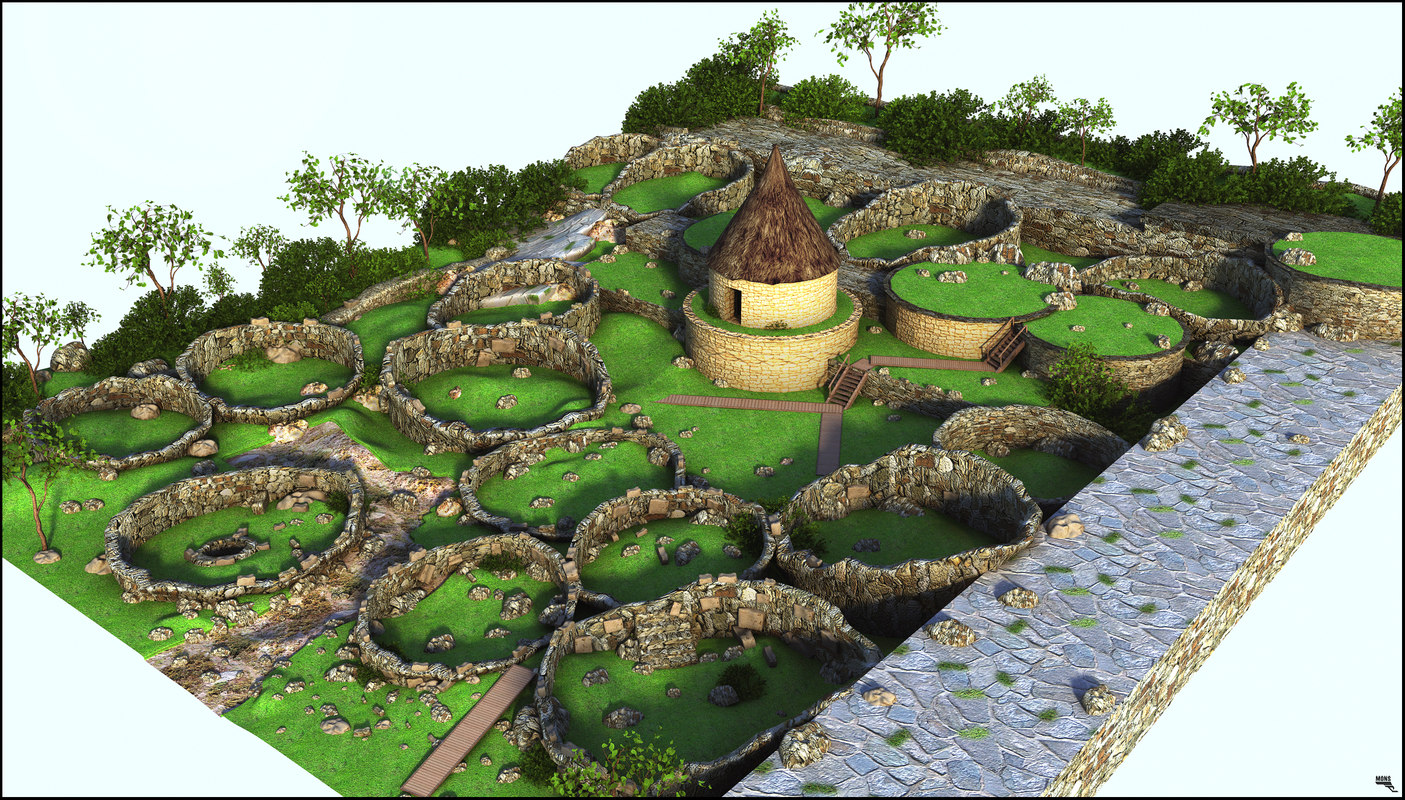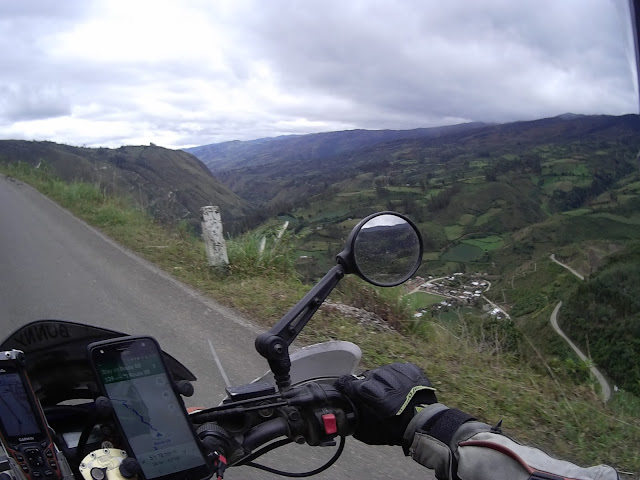Peru part 1

Entering into Peru was very easy. I chose to cross at the most eastern frontier, which is also the most remote. The road leading there is fantastic if you're on a moto. If you are on a 4x4 maybe not so much. The one guy working immigration and customs was very friendly and I think he was excited to have something to do that day. hahahah
He even wanted me to put a sticker on the side of his desk!

My first night in Peru was a small border town. I found a hotel for 25 Soles (about 7 dollars) it was clean. I had a private bathroom and secure parking.
The next day I moved on to my first destination on my list, Gocha waterfall. The fall is listed as the third highest waterfall in the world. The 10km hike round trip would certainly be worth the walk.
The ride to the falls took me through amazing landscapes and valleys. The landscape just keeps improving as I go more south!


Moving on to Chachapoyas, a small upcoming town where most tourist go for this region. The government is putting a lot of money in to rebuilding the town as a tourist attraction. They are even upgrading the airport. The area is trying to compete with Machu Picchu, because of the ruins at Kuelap a lager and and more significant site than M.P.
While in Chacha I looked into buying the required insurance for Peru. I was told at the frontier that it was required. Having asked a few places that sell insurance, I had trouble finding a office that sold to foreigners. Finally I found one, but I only purchased a month because I felt it was expensive.

I didn't buy the package deal.
One thing I started to notice as I do with most new cultures, is how they drive. Well, Peru driver suck. Most Latin American countries are horrible for driving skills, but I think Peru with take home the gold. They are terrible.
Also while in Chacha, I managed to buy some new tires. The tires cost me $120. Another big reason to be riding the bike I have. My friend who is also in South America on a big bike paid $500

Walter and his shop crew
Anyways. Kuelap. Big ruins in the mountains that are really just being discovered now. The hostel I stayed at just outside the ruins was run by a guy who likes overlanders. Carlos was kind enough to take me on a personal tour of some ruins that have not been excavated yet. And they believe they are more significant than Kuelap itself.

Ruins near Kuelap that are not yet excavated.
To get to Kuelap you need to take the new cable car that was installed last year. It takes you across a magnificent valley.
I teamed up with some people I met at the hostel and off we go.





Kuelap was a large city for the elite. Think of it as an ancient Elysium. Only the privileged lived there.
Most of the houses were two stories. A basement and a main floor. They were round and had straw roofs.


The main wall of the city.
To enter the city you had to pass through a narrow passage, there were only a few of them.

Most of the building had a striped design in the shape of diamonds. This was representing the eye of the Jaguar, so I was told by our guide.


After Kuelap I rode on to a larger city called Cajamarca.
On the way there I stopped at a famous mummy museum. These mummies were the higher level citizens of Kuelap and were found miles away in a cliffside overlooking a valley.

The city has a few decent restaurants, but the city was fairly dirty and the had a bad dog problem. When stray dogs are over populated they start to form packs, and sometimes those packs can get aggressive. On two occasions I saw packs attack other dogs and be aggressive towards humans.
While I was walking the street of Caja, low and behold, I ran into my friend Steve!

We hung out and shared food and talked about places to see and the routes we planned.
Another note regarding restaurants. Service in Peru is horrible and I have noticed a bias towards locals over gringos. There is no sense of service. It's like customers are an inconvenience. If you don't wave and call the waiter, they don't come. If you ask for a modification to your food, they say they can't do that. Napkins are cut in half and you are lucky get one. And asking for the check and paying can take another 30 minutes. Now, I have been told that Lima is a completely different story and that they have some of the best restaurants in the world.

Walking street of Cajamarcas
Moving towards Lima I stopped in the city of Trujillo. A larger metro area.
The ride into Trujillo changed from amazing valleys and mountains to horrible dirty wasteland like landscaped with trash everywhere.

The northwest section of Peru is a garbage dump. People throwing trash everywhere, the smell of sewage is pungent. Only when I reached the inner city of Trujillo did things improve.
I get a kick out of some of the comments on Adventure Rider.com There are keyboard warriors who think that if you are not in some remote goat town all the time, you are not adventure riding. But I enjoy visiting the metropolitan areas of each country I've been. There you find civility, good restaurants and relief from long nights of barking dogs and roosters!
My first day in Trujillo, I found a lovely little gourmet restaurant that featured fresh vegetarian fair. That's kinda big for the area.

Fanfare in Trujillo.
I happened to come to Peru in the month that most people are on Vacation here in the country. It's also the month of their independence day, July 28.

Plaza de Armas Trujillo
Visiting another site in Peru close to Trujillo is the ancient city of Chan Chan. Chan Chan is the largest city of the pre-columbian era and is measured to be 5 km2.
The carvings in the walls are amazing and represent the seasons, animal migration and the La Nina.




I wasn't quite ready to head to Lima just yet. If I go to Lima now, I would miss out on some good stuff. So I headed back into the mountains to the small town of Caraz. Caraz is a hub for mountain climbers, hikers and rock climbers.

The road to Caraz was amazing. Valley's with huge rock formations and tunnels.



On my way to Caraz I ran into a bit of trouble with the Bunny. After a quick stop, Bunny started to quit on me like she was running out of gas. This had happened before about a year ago, but it only happened once. A historic problem with the WR250R is that the fuel pump goes bad on certain years. Before I left the USA, I had a new version of the fuel pump installed. After some troubleshooting and disconnecting the aftermarket computer I was back on the road.
I arrived in Caraz and made some new moto friends also traveling south.
The next day I planned to ride and camp at a lake high in the mountains. However, the bike started to stall again. I managed to limp my way back to Caraz and that night I changed out the fuel pump. I was carrying an extra just in case because when you are riding a fuel injected bike in less developed countries it's a good idea to carry the extra parts you might need.


By the way, Going back to putting your bike on a sailboat. Don't! Not only did I have trouble with the electrical, but the nuts to access the fuel pump were corroded and stuck.


Old fuel pump done!
The next day, I decided just to do a day ride up to the lake and test my mechanical skills. The bike ran great and I made it to the lake.



After a couple more days in Caraz, I moved on to Lima. I would take my time and have a stop over in Huaraz, which is a craphole, but on the way there, I took a scenic ride into a valley.


I am still working on perfecting self photos, but these turned out okay.
Lima is on the horizon and there will be more to follow






Comments
Post a Comment